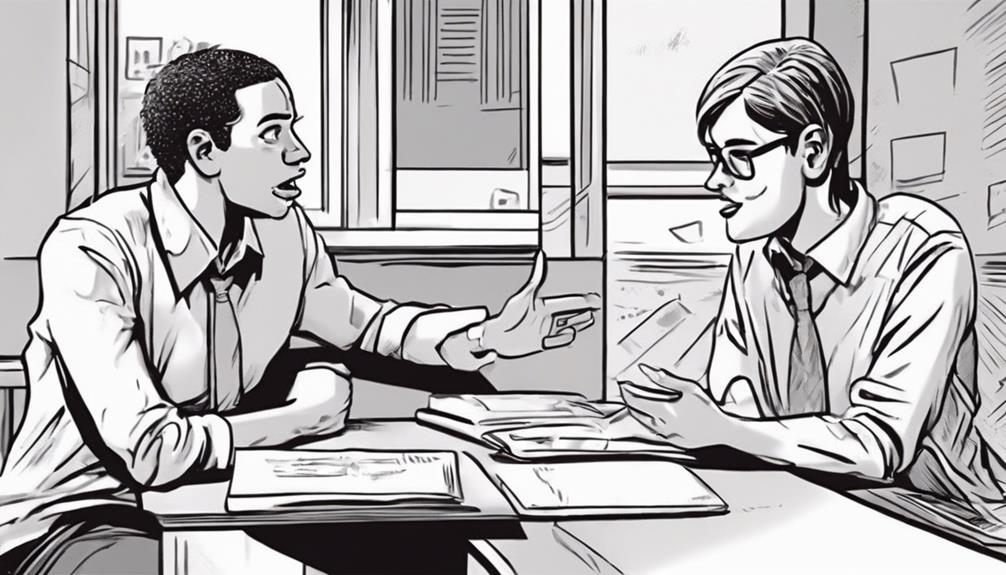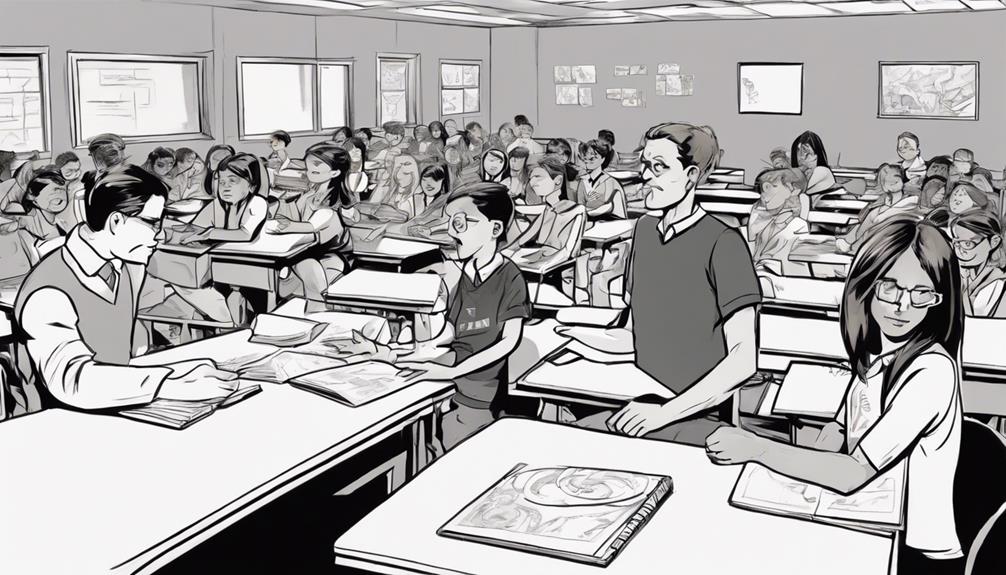Looking to enhance your verbal feedback skills? Engage students with activities like think-pair-share and interactive tech such as Kahoot. Use collaboration and critical thinking to liven up lessons! Clearly communicate expectations to inspire action and trust. Encourage reflection on feedback by noting key points and incorporating them into assignments. Connect with other educators in the online community for valuable resources. Learn how verbal, non-verbal, and written feedback contribute to student growth. Create a supportive environment that fosters development. Explore more strategies to boost student learning and make your feedback stand out!
Key Takeaways
- Utilize think-pair-share activities to encourage active participation and discussion.
- Incorporate interactive technology like Kahoot to make feedback engaging and interactive.
- Provide clear context for feedback to motivate action and build trust.
- Encourage students to reflect on and incorporate feedback into assignments regularly.
- Join online communities to access resources and insights for enhancing verbal feedback strategies.
Strategies for Active Student Engagement
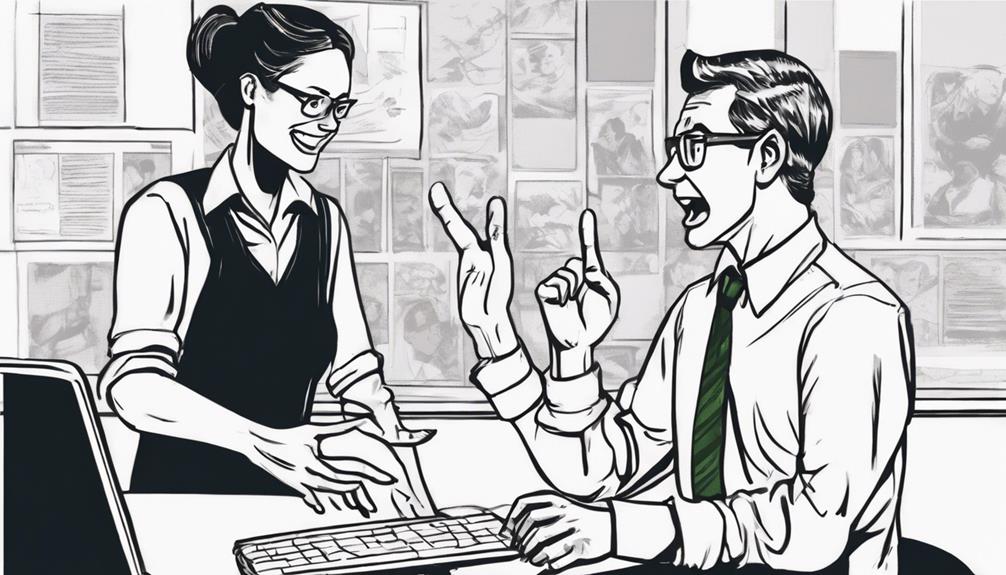
To enhance student involvement in the learning process, prioritize implementing dynamic engagement strategies that promote active participation and interaction. One effective strategy is utilizing think-pair-share activities where students think about a question or problem individually, discuss it with a partner, and then share their thoughts with the class. This method encourages collaboration, critical thinking, and verbal communication skills.
Another engaging approach is using interactive technology like Kahoot or Quizlet to make learning fun and interactive. These tools allow students to participate in quizzes, games, and discussions, keeping them actively engaged in the lesson. By incorporating these strategies, you can create a lively and participatory classroom environment that fosters student engagement and enhances learning outcomes.
Importance of Providing Context
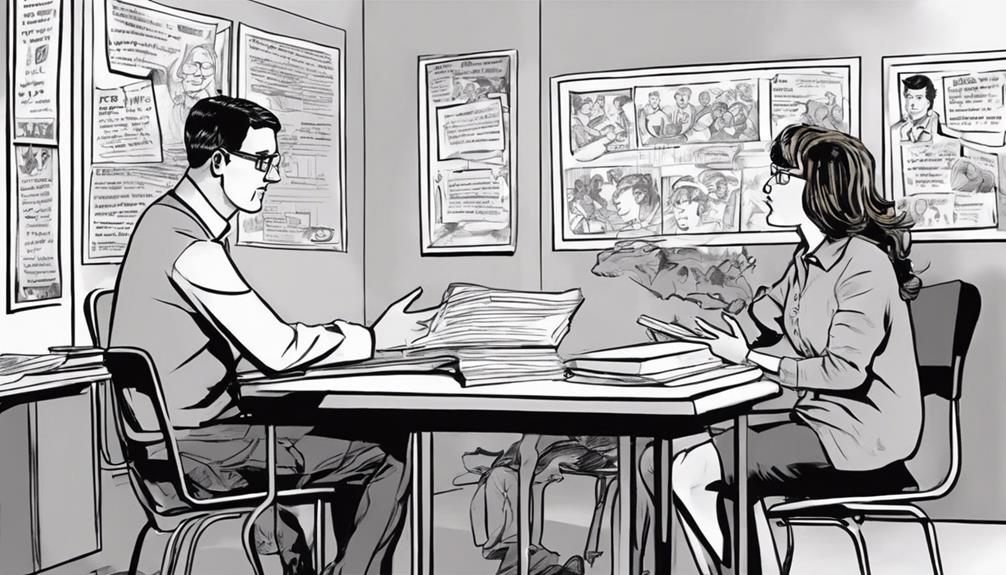
Providing context for feedback is essential in helping students understand the purpose and significance of improvement in their learning journey.
When you give feedback without reasons, it's like trying to solve a puzzle without seeing the picture on the box. Here's why context matters:
- Clarifies Expectations: Knowing why a certain change or improvement is needed helps you align your efforts with the desired outcome.
- Motivates Action: Understanding the reasons behind feedback can inspire you to take meaningful steps towards growth and progress.
- Builds Trust: Contextual feedback shows that your teacher is invested in your development, fostering a supportive and encouraging learning environment.
Techniques for Feedback Internalization

Effective techniques for internalizing feedback involve actively engaging with and processing the feedback provided. To enhance feedback retention, encourage writing down key points and reflecting on them. Incorporating questions related to the feedback in your assignments can reinforce understanding. Regularly reviewing and discussing feedback guarantees comprehension and application. Traditional marking methods can complement verbal feedback, offering a thorough learning experience. Check out the table below for quick tips on internalizing feedback effectively:
| Techniques for Feedback Internalization |
|---|
| 1. Actively engage with feedback |
| 2. Write down key points for retention |
| 3. Reflect on feedback regularly |
| 4. Incorporate feedback into assignments |
Join the Online Community
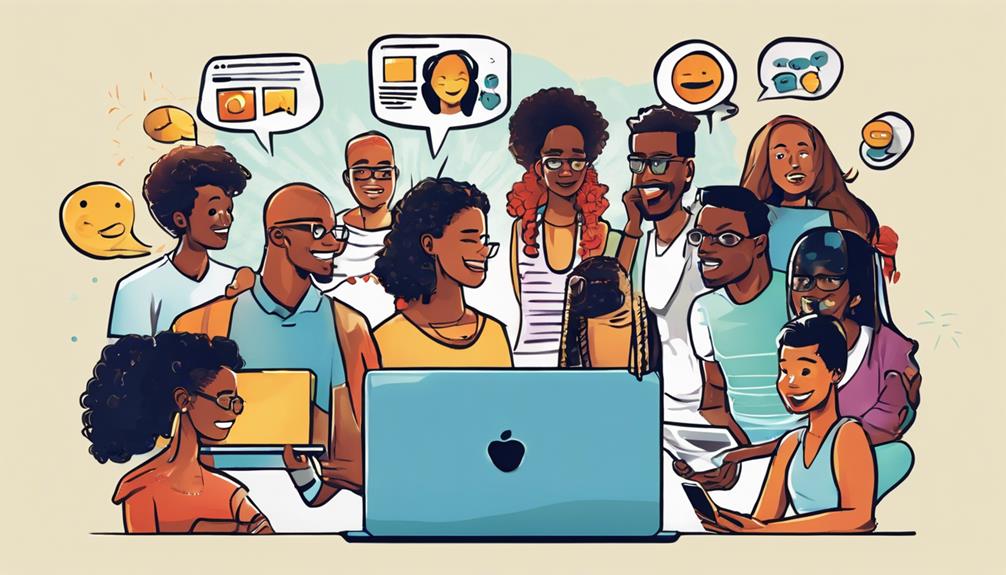
Engage with educators and like-minded individuals by joining the Richard Rogers Online Community for daily updates and valuable resources.
- Stay Updated:
Receive daily posts and updates on effective verbal feedback strategies and teaching techniques.
- Connect with Educators:
Engage with a community of passionate educators to share insights, experiences, and tips for providing impactful feedback.
- Access Resources:
Explore a wealth of resources shared by Richard Rogers and other community members, including articles, videos, and interactive discussions.
Joining this online community not only keeps you informed but also allows you to collaborate with educators who share your enthusiasm for enhancing student learning through effective verbal feedback. Don't miss out on this opportunity to connect, learn, and grow together!
Understanding Feedback Mechanisms
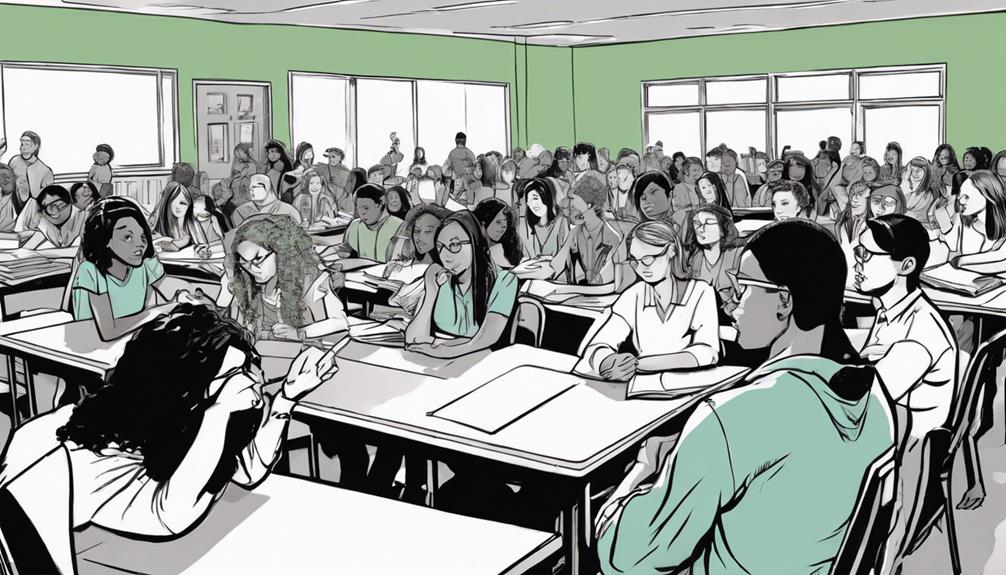
Consider how feedback mechanisms, including verbal communication, non-verbal cues, and written responses, play a pivotal role in enhancing understanding and driving improvement in educational settings.
Verbal communication, such as constructive comments from teachers, helps clarify concepts and guide students towards progress.
Non-verbal cues like a nod of approval or a smile can motivate and reassure learners.
Written responses, whether on assignments or in feedback forms, provide tangible guidance for improvement.
Understanding these feedback mechanisms allows for a holistic approach to student development.
By recognizing the significance of verbal, non-verbal, and written feedback, educators can create an environment where students feel supported, motivated, and empowered to excel.
Frequently Asked Questions
How Can Teachers Tailor Feedback to Individual Student Needs Effectively?
You can tailor feedback effectively by personalizing comments to each student's needs. Provide specific examples and actionable steps for improvement. Encourage students to reflect on feedback and set goals. Remember, individualized feedback fosters growth and enhances learning outcomes.
What Are Some Creative Ways to Encourage Students to Reflect on Feedback?
Reflect on feedback creatively by journaling thoughts, connecting feedback to personal goals, and creating visual representations. Engage in peer discussions to gain diverse perspectives. Prioritize understanding and growth through feedback reflection for continuous improvement.
Is There a Recommended Frequency for Checking Student Feedback Records?
Monitor student feedback records regularly to guarantee comprehension and retention. Encourage students to write down feedback immediately for better understanding. Combining live marking with verbal feedback can lead to real-time improvement and enhanced memory retention.
How Can Educators Ensure Students Apply Verbal Feedback in Their Work?
You must guarantee students apply verbal feedback by fostering a culture of reflection. Encourage active engagement with feedback, prompt immediate action, and reinforce learning through regular follow-ups. By nurturing this cycle, students will grow and excel.
What Strategies Can Teachers Use to Address Students' Fear of Criticism During Feedback Sessions?
Address students' fear of criticism during feedback sessions by creating a safe environment where mistakes are seen as opportunities to grow. Encourage open dialogue, emphasize constructive criticism, and focus on improvement rather than judgment to foster a positive feedback experience.
Conclusion
To sum up, implementing engaging strategies for effective verbal feedback can truly transform the learning experience for both students and teachers.
Just like a well-tuned orchestra, when feedback is given with precision and care, students can fine-tune their skills and reach new heights of understanding.
By actively involving students in their learning journey, providing context for feedback, and internalizing the process, educators can create a harmonious environment where growth and learning flourish.
Join the community, share insights, and elevate your feedback practices today!

